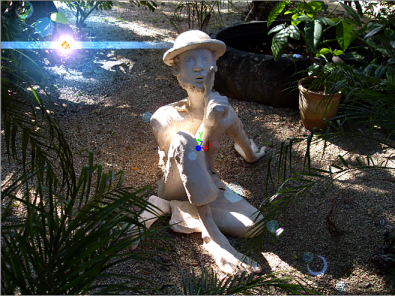Relighting: Lens Flares
Use lights in your scene to generate procedural lens flares with built-in 3D occlusions.

With lens flares in Action, you can control:
- How lights change as they move behind 2D or 3D layers.
- How flares behave when a light exits or enters the camera field of view.
Lens Flares in Action are comprised of a Lens Flare object, attached to one or more Border FX objects, and any number of texture components, such as irises, streaks, and glows. To help you get accustomed to working with lens flares, a preset with typical settings is loaded when you first add a lens flare object to your scene.
Multiple lens flares can be attached to a light, and multiple lights can attach to a lens flare.
Rendering Lens Flares
Lens Flares can be added as a render pass output selection. The lens flare (and rays) result can also applied by default in the Comp output (using the Action Lens Flare / Rays button).
You can deactivate the Action Lens Flare / Rays button, and put a lens flare anywhere in the post processing pipeline, using its own output pass via a Lens Flare Matchbox shader (by default Lens Flares are at the very end of the Camera FX pipeline).
See Outputs Options for more information.
